10 Proven Tips to Improve Your Workout Performance
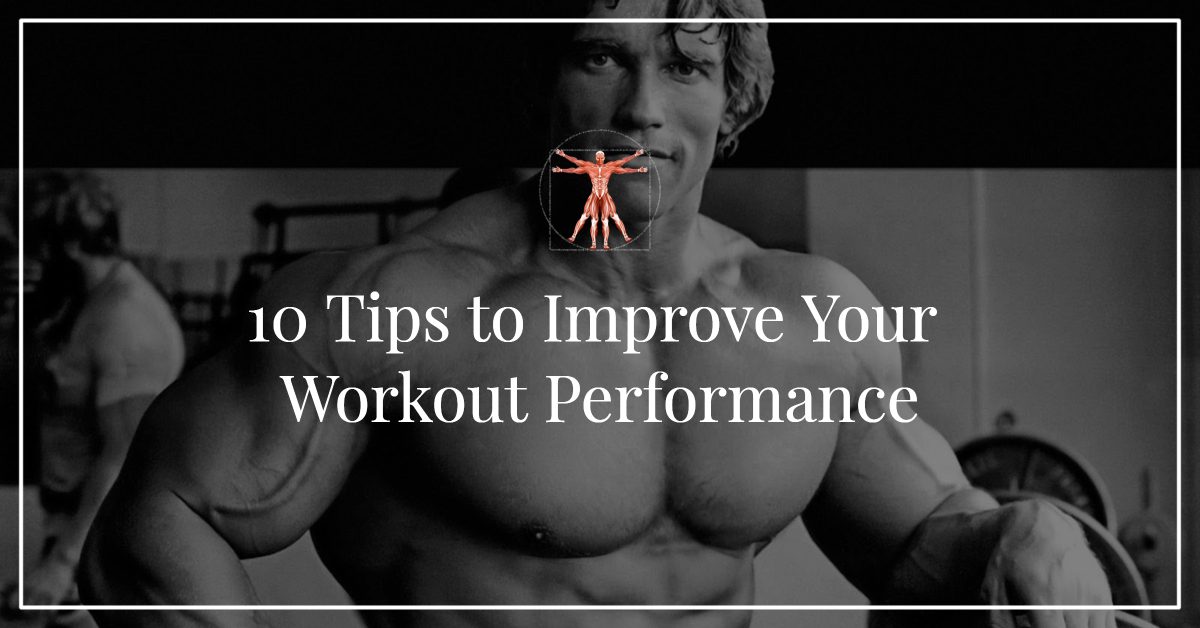
“Will I ever recover enough to deadlift again?”
When I injured my lumbar spine, anxiety plagued my workouts for months. But I finally managed to overcome my performance anxiety and even improve my workout performance. I’ll show you how in this article, with tactics sport psychologists and world-class trainers use to make pro athletes win.
In this piece:
- How to turn your dream performance into a manageable roadmap
- How to overload appropriately to improve your workout performance
- Tactics sport psychologists use to make professional athletes win—including the “catastrophe model of workout performance”
- How I overcame my performance anxiety after a lumbar spine injury
- Mistakes bodybuilders make thinking they’re endurance athletes
How to turn your dream physique or performance into a manageable roadmap and practical bahaviors
1. Set goals
We all have a vision of how we’d like to perform and look. Sometimes, our vision can feel overwhelming, like a long, steep uphill climb.This can lead to feeling anxious and despair, and that drains motivation.
Let’s look at a better system for achieving our fitness dreams.
Figure 1—Goal setting process
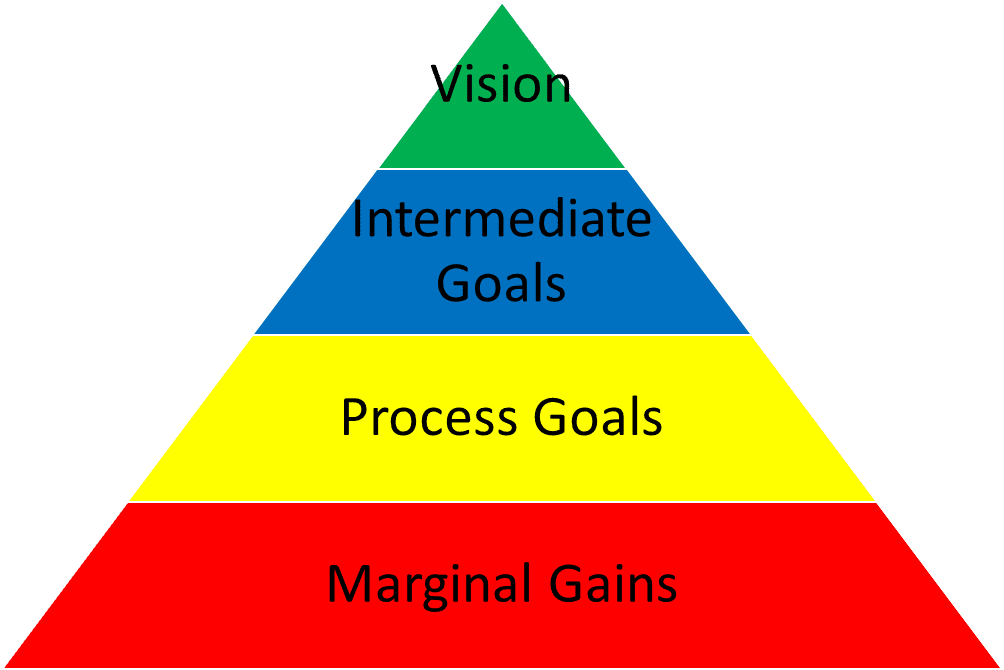
The Vision is your ultimate goal, a physique or level of performance you’d like to achieve in 2-5 years. Give some thought as to why you’d like to achieve this vision. Why is it important to you?
The Intermediate Goals is your roadmap to success. Break your vision down into monthly or 8-week goals. You don’t need to set all 3 years at once, but you should set try to establish monthly goals for the next 3-6 months. These goals should be testable and quantifiable (i.e.: pounds of fat lost or muscle gained, increase in maximum bench press weight, etc.).
Process Goals are the exercise and diet programs you put together to achieve each intermediate goal. Because the rate of adaptation (how fast you make gains) slows as you get closer to your vision, the process will need to adapted to each specific intermediate goal.
Marginal Gains are your daily behaviors. If you meet these goals once or twice, the outcomes will be minimal. But, if you repeat them consistently over time, the minimal outcomes will add up to large changes. Write down the habits you need to establish to reach your goals and practice them often!
2. Plan variation appropriately
Maybe you’ve heard the term muscle confusion, maybe you’ve heard you need to mix up your workouts frequently, or maybe you get bored easy.
We inherently seek novelty. It’s exciting to try a new restaurant, wear a new outfit, travel and date. Changing your workout program can be motivating, whether it’s new exercises, a different rep range, or a new training style (i.e.: switching from bodybuilding to Crossfit).
Variation not only prevents boredom, but also helps to prevent physiological accommodation and stagnation (i.e.: plateaus) and may reduce the risk of overuse injury.
The trick is to apply variation purposefully. Apply too much variation (i.e.: do a different exercise for quads every workout) and you never maximize the neurological adaptations and skills necessary to perform that movement, and won’t optimally overload the muscle.
The sweet spot seems to be varying the sets and reps every 4-8 weeks and the exercises every 4-12 weeks. You can do that manually or let our smart workout app do the hard work for you (try it free).
3. How to overload appropriately to improve your workout performance
Very little will keep you coming back for more than making noticeable progress. On the flipside, plateauing and regressing will zap your motivation to train.
Appropriately overloading is one of the easiest ways to ensure measurable progress. You don’t need to go all-out or set personal bests every single workout. In fact, it’s better if you don’t. Figure 2 illustrates that although at first you may make faster gains by going all-out all the time, you will plateau and possibly burn out faster.
Figure 2—Progress the overload slowly
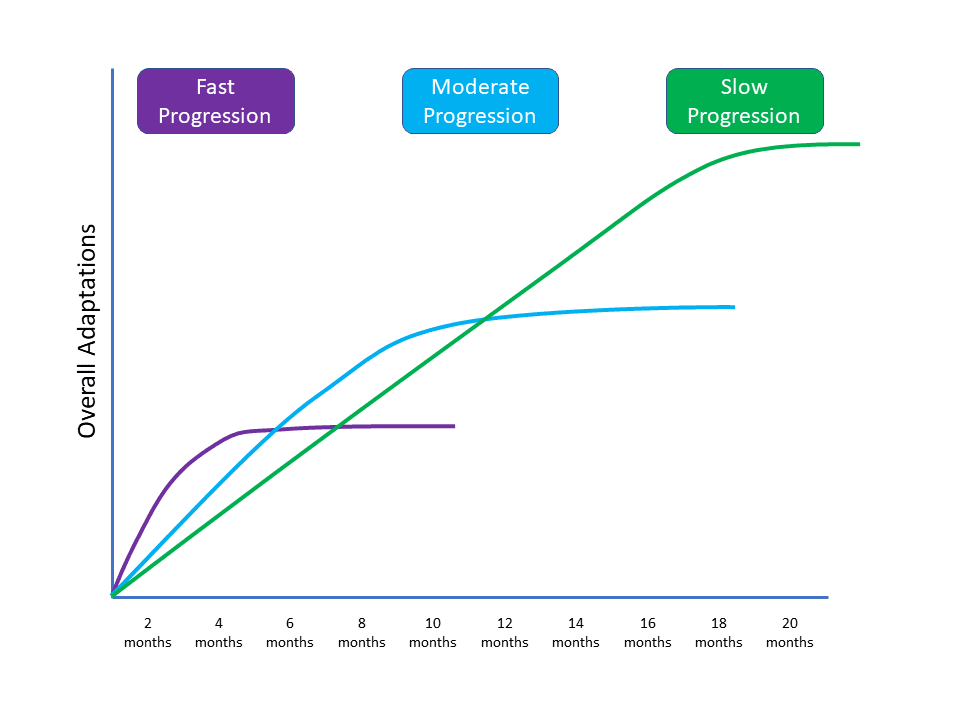
Instead, plan to increase the volume and/or intensity of work by a few percentages every workout for 4-8 weeks, culminating in an ass-kicking week. An easy way to apply this is to stop your sets 3-4 repetitions shy of failure the first week, and then go one rep closer to failure every week until the final week, where you train to failure. Learn more in our guide on progressive overload.
4. Record progress
What we can measure, we can improve! Recording workouts allows you to document the progress you’ve made, and making observable progress is motivating to achieve more.
I like to log workouts in Excel and chart weekly progress. The video below gives an example:
Frequent testing can also be used to observe improvements. Try to measure your body composition, strength, and/or muscular endurance every 4-12 weeks to gauge progress.
5. Manage fatigue
We’ve all had bad days where the weights feel unusually heavy. Maybe it’s due to stress, lack of sleep, or poor nutrition.
But when bad gym days out number good days, motivation suffers, injury risk increases, and it’s a sign we’ve done a poor job managing accumulated fatigue.
There are two ways to manage this fatigue, though a combination of the two is probably most effective.
- Planned deload periods: Perform a week of low-effort workouts once every 4-10 weeks.
- Autoregulate: Recognize the signs of accumulated fatigue and reduce the intensity and volume of workouts as necessary to allow for recovery.
Tactics sport psychologists use to make professional athlete win
Now let’s look at some tactics we can use from day to day to improve workout performance.
Sport Psychology
Regulating arousal and imagery are techniques used by sport psychologists to improve performance in Olympic and professional athletes.
For simple tasks with low stakes, increasing arousal will benefit workout performance up to a certain point. For complex and high stakes tasks, increasing arousal will increase performance, but too much arousal will significantly harm performance.
Figure 3—Catastrophe model of workout performance
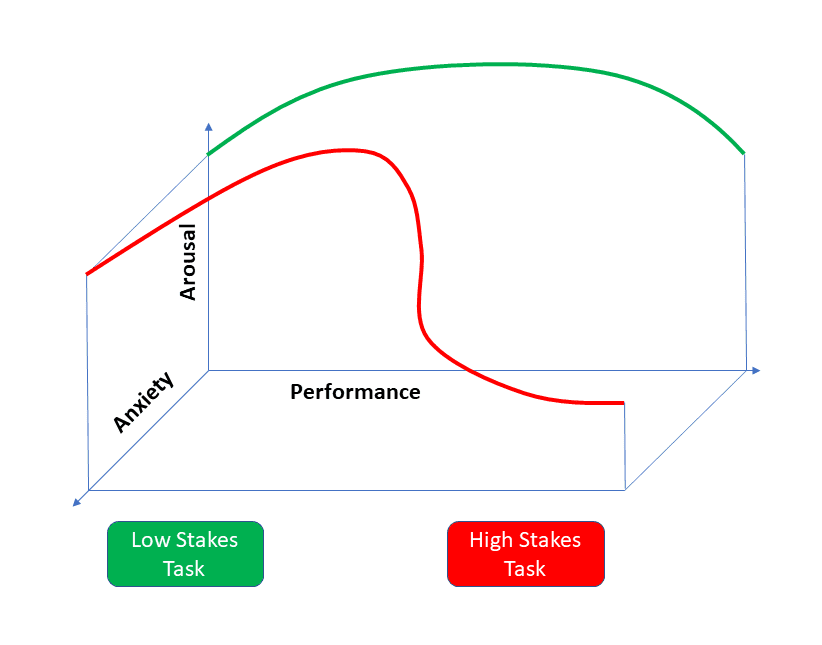
Workout sessions should be a low-stakes, fun task. Here are some ways you can regulate arousal for a great workout.
6. Create a solid workout playlist
Studies show people perform better and report less discomfort when they exercise to music they enjoy versus music they dislike. While there’s a large difference in individual preferences, fast music (> 120 bpm) with strong lyrics seems most effective.
Want to see how motivational your music is? Check out the Brunel Music Rating Inventory!
How I overcame my performance anxiety after a lumbar spine injury
In the months following a lumbar spine injury, anxiety plagued my workouts. “Will I get hurt squatting?” “Will my back prevent me from doing rows?” “Will I ever recover enough to deadlift again?” Imagery helped me regulate my performance anxiety and arousal.
7. Use imagery to increase your workout performance
Imagery is a powerful tool to regulate of anxiety and arousal.
Imagery can help those without anxiety enhance their workouts by visualizing difficult skills (maybe you are struggling to perform the power clean in good form), minimizing training distractions, and increasing confidence.
Figure 4—Imagery is a valuable, and underused fitness tool
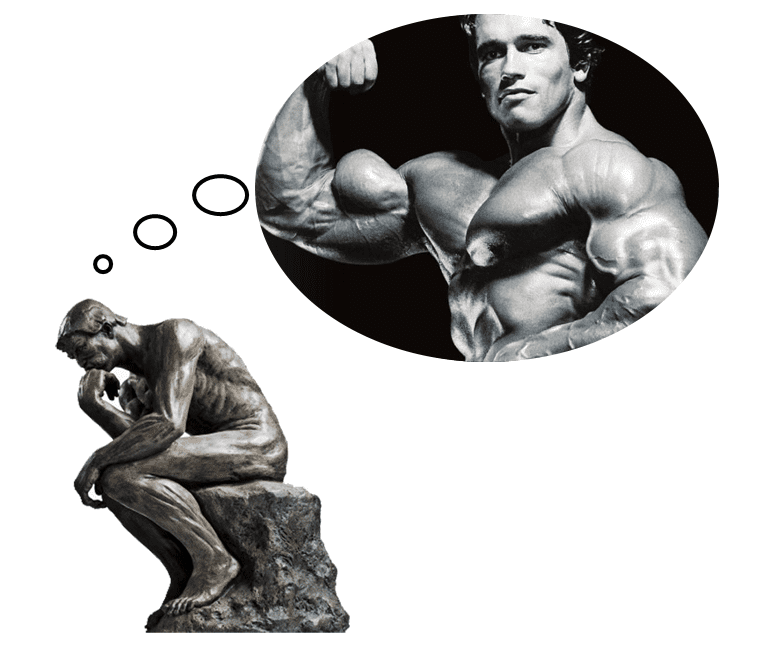
Here are some simple tips to use imagery from the Association for Applied Sport Psychology:
Practice often – Imagery is a skill you need to perfect, use it before every workout, not just every once in a while.
Start small – Begin by focusing on high quality mental images of one specific part of your workout for a short duration. You can expand as your ability to concentrate and im
Figure 4—Imagery is a valuable, and underused fitness toolagination grows.
Details matter – Try to use all your senses: sight, sound, taste, smell, and feel. Include as many details as possible (i.e.: the exact weight bench you will use, the feel of the bar in your hands, the sensation of exertion).
Plan your imagery – What do you want to accomplish or overcome in your workout? Focus your imagery on specific needs.
8. Find accountability
Psychologists identify two types of accountability: internal and external. Utilizeboth to improve motivation, consistency, and performance in the gym.
External accountability arises from a relationship with a friend, family member, or group. Crossfit and fitness Boot Camps are successful because they leverage external accountability.
You can do this too by working with a training partner or hiring a coach. Your training partner should be someone of with similar levels of fitness and goals. Together you overcome challenges and hold one another accountable to showing up and putting in the effort.
You can also confide your goals in someone you trust not to judge your desires to get perform better, but also will not accept your excuses when you don’t follow through.
Internal accountability is a contract or promise you make with yourself. Fitness Apps that track your steps and workouts, and record your “streaks” use internal accountability to motivate you to stay consistent.
Mistakes bodybuilders make thinking they’re endurance athletes
9. Warming up for a workout
Far too often weight lifters and bodybuilders overlook or warm up like endurance athletes, and their workouts suffer. An effective warmup consists of three components:
Increase muscle temperature – A warmer muscle is a stronger muscle: The enzymes responsible for producing ATP increase their activity by 3% for every 1 degree increase in muscle temperature (q10 effect. Additionally,the warmer the muscle, the more easily contractile and other proteins will move through the sarcoplasmic medium. You can accomplish this via light cardio or calisthenics.
Movement preparation – Take the joint through an active, full range of motion to engage fixator and ancillary muscles. For the lower body this could be in the form of lunges or bodyweight squats. For the upper body pushupsand various reaching exercises can accomplish this task.
Movement specific – Recruit the big, powerfulmotor units without fatiguing them. This is the part of the warmup most people get right, performing 3-5 sets of 3-10 reps with progressively increasing submaximal weight.
Bonus – Incorporate post activation potentiation. If your workout consists of higher repetitions (> 10), performing a set of heavy (2 repetitions of ~90% 1RM) with plenty of rest (~5 min) prior to your working sets will increase how many repetitions you can do.
10. Increase training density
Training density is the time necessary to complete a workout. A 100-rep workout completed in 45 minutes is denser than 100 reps completed in 60 minutes. Increasing density without sacrificing quality gives the feeling of a more productive work out andreduces gym-time commitments.
Rest-pause sets are one way to increase density and produces similar or slightly greater hypertrophy outcomes compared to traditional sets. For example, your workout calls for 3 sets of 10 repetitions with 60 seconds of rest between sets. Instead, you can perform one set of 10 reps, and 4 sets of 5 with 20 seconds of rest to increase density
Figure 5—Training density with traditional vs. rest pause sets
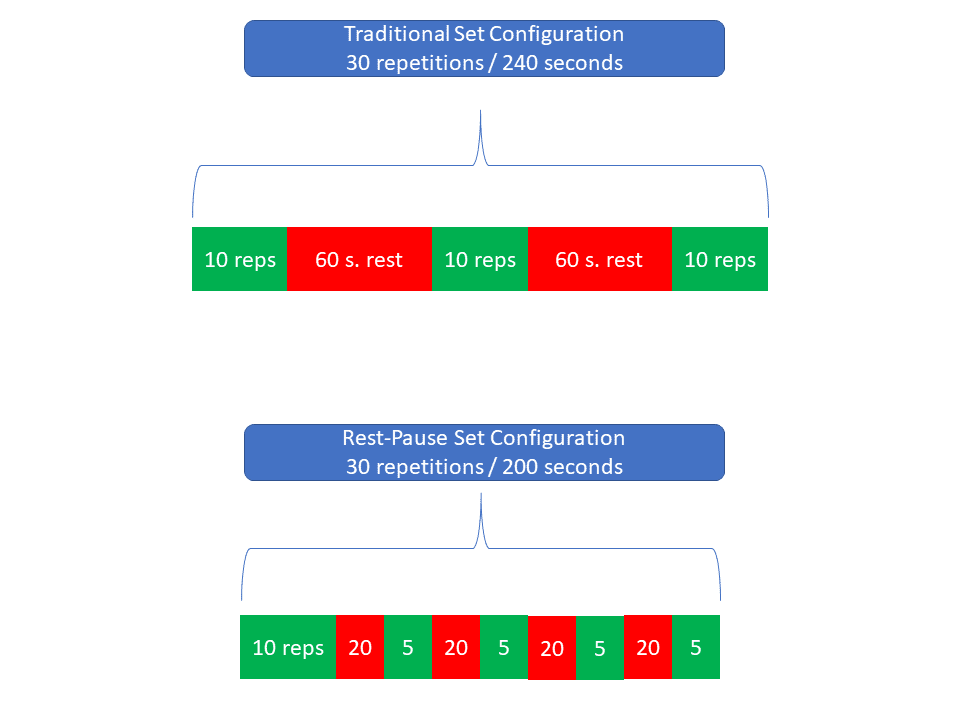
To learn more, check out our guide Rest-Pause: Can You Really Build Muscle Faster With This Tip From the Only Bodybuilder to Ever Beat Arnold Schwarzenegger?
Agonist-antagonist supersets also produce similar hypertrophy outcomes (with less time in the gym) compared to traditional sets. Supersets involve performing two sets of opposing muscle groups (i.e.: biceps and triceps or chest and back) back to back without rest.
Improve your workout performance on autopilot
Ready to take your workout performance to the next level? You may want to check out Dr. Muscle, our smart workout app.
In short, it’s like a trainer in your phone. It automates your progress and all the programming an expensive coach would charge you for.
You get a smart, custom program that updates in real time as you do it, and that gets more challenging automatically as you get in better shape. That way, you always get in shape as fast as possible, and you don’t have to keep up with the latest workout performance science to fine tune your program (we do that for you).
On the fence? You can try it free or read our reviews. Here are a few:
Try Dr. Muscle to Improve Your Workout Performance on Autopilot for Free
On a related note, this post is sponsored by HYLETE. HYLETE is a brand of high performance workout gear. They use 4-way stretch and antimicrobial fabric that’s soft, breatheable, and stylish. Check them out this Black Friday to get 30% off sitewide and free shipping.
